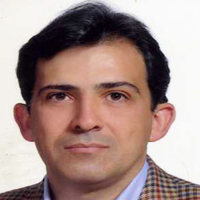Kahiro II: The importance of copper oxide extraction technology in 4th millennium BC in Halil river basin
During an archaeological survey in the area known as Halil River cultural district, a large number of metallic slag and crucibles were found which have been scattered as residues over the surface of the site, called Chayiro II. The study on the melting slags and crucibles help to know about the metallurgical processes and the presence of copper as the main metals in this region. 10 samples have been selected for mineralogical investigations for identifying the crystalline phases, X-ray fluorescence analysis for better clustering the chemical composition as well as microscopical investigations. Copper droplets in the microscopic textures of the slags indicate the extraction of copper at this time in this region. Copper droplets have been dispersed as the crystalline form and are useful as a factor to estimate the melting temperature. The parts of the melting copper droplets found in this range also show copper casting. The igneous minerals found in the texture of crucibles show the use of an igneous source for their production as the main metallurgical vessels for purification as well as casting. Copper oxide minerals are mainly consisted of cuprite (Cu2O) and delafossite (CuFeO2) in the investigated samples. The existence of oxide minerals as melt residues indicates the melting of copper oxide in the region. Indeed, the accumulated of residues of oxide compounds are mainly the remains of an incomplete process of extraction or casting, which results in the formation of oxide copper at the last casting stage. It seems that copper oxide components are used for the production of matte or copper ingots. Based on the investigations, Kahiro II can be introduced as one of the focal points about the further consideration in this region. Copper oxides are the one of the oldest copper components that used for metal casting and extraction, via direct reduction.
-
Charactrization and Elemental Analysis of Mina'i Pottery from Alamut Castle Using Scanning Proton Microscope
Davoud Agha-Aligol*, Mohammad Lamehi-Rachti, Mahmoud Moradi, Melika Yazdani,
Journal of Knowledge of Conservation and Restoration, -
Cathodoluminescence Microscopy for Interpreting the Technology and Provenance of Archaeological Objects (Case Studies; Pottery and the Stone)
Mohammad Amin Emami*
Journal of Knowledge of Conservation and Restoration, Summer 2020



